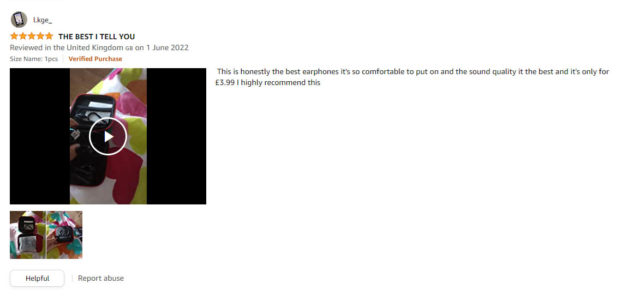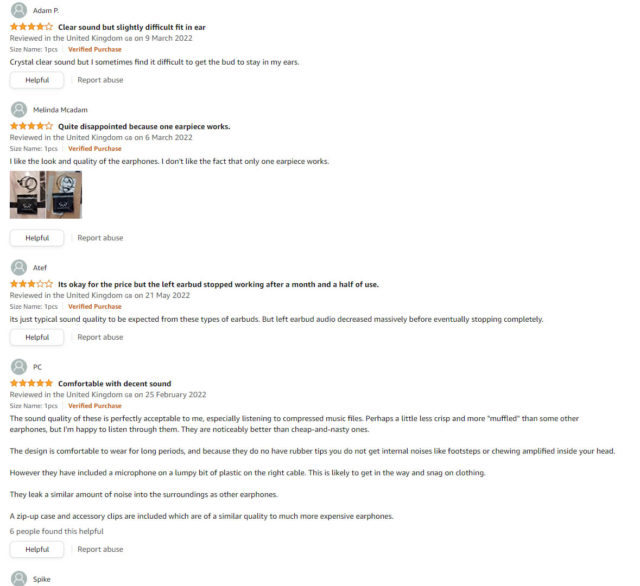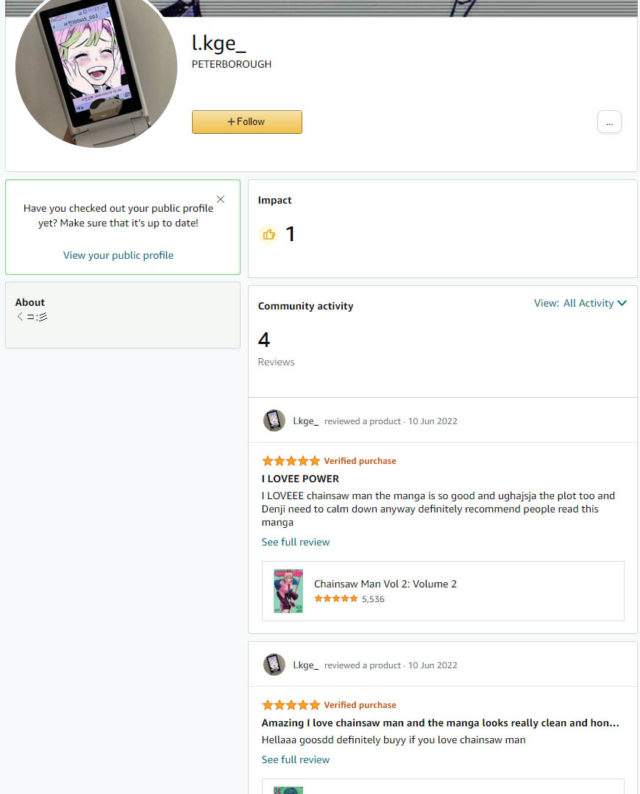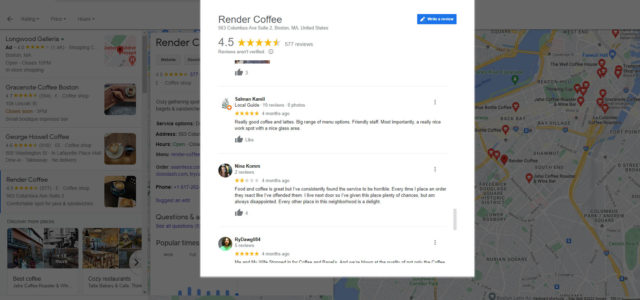
How to Spot Fake Reviews
Are you confident that you know how to spot a fake Google review? Or certain that you know just how to identify a fake 5-star review from a mile away? While many of us are pretty happy that we know a fake when we see it, the reality is that the techniques being used to generate less-than-truthful ratings are evolving all the time. Using review management software can help, but it’s just one of the methods you’ll need to use to spot them.
What’s more, the tactics used to leave good or bad feedback for interactions that never really happened can differ from platform to platform. A red flag that helps identify a fake review on Google may not raise suspicions when you’re searching for fake Yelp reviews.
So, why are fake reviews a problem? The reality is that fake reviews aren’t just a frustration or inconvenience. They have a real bottom-line effect that no local business can afford to ignore. The reputational damage inflicted by unjustified poor reviews can be costly in itself, but it becomes more pronounced if low-star ratings impact on consumer decision-making.
Fake reviews don’t just erode consumer trust in a local business though. Whether it’s via Google, Amazon, Yelp or Facebook, negative reviews could cause your local search ratings to suffer, costing you search visibility and putting you at a disadvantage against competitors. They also undermine your efforts to build a strong review profile – something that could have taken years to achieve.
Tips for identifying fake reviews
With our review research confirming that 62% of people believe they have seen a fake review in the last 12 months, it pays to know what to look out for so you can take swift action against bogus feedback left for your local business. Here are our tips for spotting a fake review, regardless of the platform.
1. Look for clusters of reviews posted simultaneously
Multiple reviews appearing at the same time could be a sign that something is amiss. If the timing for several reviews matches, it may be that the business has purchased feedback, paid for five-star listings, or offered incentives such as cash or free products to customers in exchange for their rating.
If you’re a local business that has been subjected to a series of poor reviews in quick succession, checking if the time of the submissions is roughly the same could be an indication that they are fake. If that’s the case, it may be that a competitor is trying to drive down your star ratings.
2. Be wary of over-the-top descriptions
Receiving complimentary feedback about your business, your team, and your services is a bonus of being proactive about building your review profile.
However, comments that seem incredibly over-the-top, enthusiastic, and effusive could be suspicious. If the language seems to be very exaggerated in its praise, it may be that the reviewer isn’t genuine. This type of fake feedback will often be littered with exclamation points, too.
3. Look for specific details
A lack of detail and specific information also gives food for thought when it comes to deciding if a rating is genuine or not. While most of us will admit to leaving just a star rating and perhaps a word or two when we’re pushed for time, a lack of detail can also indicate the person writing the review doesn’t have first-hand experience with that product or service.
4. Be alert for words such as refund or discount
Another warning sign that a competitor could be manipulating their review profile to artificially boost their local business is the use of words suggesting monetary payment or free products. Be alert for words such as gift code, voucher, discount, and refund which may suggest that the reviewer has been paid or coerced into leaving a positive rating. Incentivizing reviews is against most platform guidelines.
5. Look for very similar reviews
If a local business has several reviews, but many of them are worded in much the same way, it’s likely you’re looking at a series of fakes. Genuine customers sharing their genuine experience of a business will naturally write in different ways, and use different styles of language and varied vocabulary. Fake reviews are often created and posted in bulk so are little more than duplicates.
What does a fake review look like?
In 2020 alone, Google removed 55 million fake reviews and terminated more than three million fake Google Business profiles. Its hard stance on inauthentic reviews saw it remove almost one million reviews reported by Google Maps users, too.
However, buying and selling fake reviews is big business. So much so that Amazon has launched legal action in both Europe and America targeting more than 11,000 websites selling fake reviews.
With bad actors getting ever more inventive when churning out fake reviews to deceive consumers and artificially inflate (or drive down) business profiles, it pays to know what a fake review really looks like. As a small business owner, being able to identify malicious or phony feedback is the first step to taking remedial action – such as flagging it to the review platform and requesting removal.

- Use of all caps: This review title is all in caps, which instantly raises a red flag. All of the other reviews on this product page have a lowercase, descriptive but not over-the-top title:

- Poor grammar: While it’s entirely possible this person is a non-native speaker, the poor grammar and unnatural use of language both indicate this is a fake review.
- Excessive multimedia: The consumer group Which? says that many sellers who use incentives to gather reviews require pictures and videos to be included. This review stands out because it includes both a video and two images, which could be considered excessive for earphones in a box.
- Overly favorable: The use of “the best” in the title in caps raises a red flag.
- Keyword stuffed: The word ‘the best’ is repeated twice in the short review. The text also notes the price is “only” £3.99 and ends with “highly recommend”. The overall impression is that the text has been written for an algorithm, not a genuine consumer.
- Lack of profile information: This user has no profile information at all. Few details could signal this is a fake account created for review spam.
- All positive reviews: This reviewer has posted a very small number of reviews, but they all follow a similar format with poor grammar, spelling mistakes, over-the-top praise, and a call to action for the reader to buy the relevant product.

Spotting fake reviews on Google
Your Google review profile is one of your most valuable online assets as a local business, and we’ve gone into detail about the benefits of reviews before. Not only is it known to be a local SEO ranking factor, it also directly impacts consumer decision-making. That means it can influence whether you make a sale, receive a booking, make a reservation, or lose out to a competitor.
Knowing how to spot a fake Google review can therefore help your business to weed out unscrupulous feedback and protect your lucrative online reputation.
Check the reviewer’s Google profile

Most inauthentic ratings come from accounts that are set up specifically for that purpose. That means they won’t have posted many other reviews. Whether excessively good or incredibly poor, if you suspect a bad actor, it’s easy to see how active that profile is on Google. You’ll see the number of Google reviews they have posted displayed as a numerical figure under the account holder’s username. A very small number of reviews could be evidence of fakery at work.
Check the reviewer’s activity
In addition to seeing the number of reviews a user has posted, you can also see the reviews themselves. This is a great tip for local business owners who are keen to learn how to spot a fake Google review. A glance at previous reviews left by that person can quickly reveal whether they are a genuine user or not.
Check if the places reviewed are within the same local area. If most places are in entirely different locations, such as different states on the other side of the country, it could well be a bad actor at work.
If images have been uploaded with reviews, browse through those to get a sense of whether that reviewer has images in places they have reviewed. Fake reviews won’t be accompanied by genuine, related images.
Look at timings
From the user profile, you can also check the frequency of review postings. Has the reviewer your suspect to be a fake posted clusters of reviews at the same time or are they sporadic? A flurry of reviews posted at the same time suggests that the ratings are not authentic.
Cross-reference with your sales logs
Google will often display a reviewer’s name above their review. If that’s the case, it’s possible to perform a cross-reference of your own records. Compare your sales logs with the name of the person leaving the review to determine if they are a genuine customer.
Does the reviewer have a profile picture?
Fake reviewers often won’t share too much personal information on the profiles they create. Along with other red flags, the lack of a profile picture raises suspicions. Likewise, very generic or cartoon images can also indicate that the reviewer is attempting to hide who they are.
Does the comment reference specific aspects of your business?
Genuine reviews will often provide specific details about the user’s experience so, part of knowing how to spot a fake Google review is being able to check for those factual inclusions. Are specific team members mentioned for example? Are the names right if so? Are service details factual or, does the review refer to services or products that you don’t offer? Inaccuracies are a tell-tale sign that the review has been created by someone without first-hand experience of your local business.
How to spot fake Facebook reviews
With 75% of users said to visit a local business Page at least once per week, it’s essential that local business owners know how to spot a fake review on Facebook.
Is the text vague?
A very vague piece of text may suggest that the person writing the Recommendation hasn’t truly interacted with that local business.
Genuine reviewers will often pick out specific aspects of their experience, whether good or bad, to explain why they Recommend (or not) that business. Very brief, vague comments can be one clue that the Recommendation is fake.
Is the Recommendation too complimentary?
Using language that’s way over the top is another clue that the Recommendation has been created to artificially boost ratings. Descriptions that sound too good to be true, with lots of superlatives that really oversell things are a tell-tale sign that you’re looking at a fake review.
Does the user have a profile image?
Much like with Google reviews, the lack of a profile picture or the use of a cartoon image instead is another warning sign that the reviewer isn’t genuine. You’ll be able to see the profile picture for the account holder sharing the review to the left of the review itself.
Does the reviewer have Facebook Friends?
Another clue that you may be looking at a fake Facebook review comes from the reviewer’s profile. Clicking on their profile picture will take you to the profile page. How many friends are on their friends list? If the profile doesn’t have any Facebook friends, or only very few, you have another indication that the review is fake.
Spotting fake reviews in specific industries
While all consumer reviews matter, in some industries, being able to trust the content of a review is even more important. For professions such as lawyers, healthcare workers, real estate brokers, and so on, dishonest reviews could have serious consequences including financial loss.
How to spot fake hotel reviews
Hotels rely heavily on reviews to attract new guests, but how can you tell if the ratings are genuine?
- Be wary of all 5-star reviews: It’s not realistic to expect that a property will have only five-star feedback. While you’d expect to see a good portion of five-star reviews for a great destination, a natural review profile will also have its share of other star ratings too.
- Look at the most recent reviews: Some review platforms will sort by the top-rated or most useful reviews. Sort by most recent to get a true picture of what guests are actually experiencing right now and then look for comments that stand out as being very different from the general consensus.
- Compare with other review platforms: Looking at reviews across two or more platforms is a good way to get a sense of the overall feedback about the hotel. You’re then better placed to pick out those reviews that seem wildly different in their experience than the majority of other guests.
How to spot fake reviews in real estate
With intense competition and huge commissions at stake, it’s no secret that real estate can be a cutthroat business. If you suspect a competitor may be inflating their profiles with fake reviews, here are a few things to look out for:
- Look at the language: If the language used in the review is littered with acronyms or uses an abundance of industry jargon, it could be a fake.
- Does the review talk about the property? A genuine reviewer is likely to make reference to the property they have just bought or rented. If the review contains no references to the property at all, it may be that the person writing the review hasn’t really used that realtor’s services.
- Does the review mention any challenges or issues? Buying a house is seldom straightforward. If a realtor’s profile is packed with reviews that claim the whole process went smoothly, something could well be amiss. You should expect to see some comments about challenges, issues, or delays encountered in at least some of the reviews.
How to spot fake reviews for healthcare professionals
Fake reviews are especially concerning in the healthcare industry, where patient health could be put at risk by unscrupulous rivals.
- Is the description of the service provided realistic? Consider the language of the review and the tone of the reviewer when describing their experiences. Does it align with the service provided? For example, it’s unlikely that anyone will wax lyrical about teeth cleaning at the dentist so a review that is extremely complementary with excessive use of superlatives should raise a red flag.
- Are other healthcare provider names or brands mentioned? If the reviewer compares one experience with a named local competitor, it may be that the reviewer has been paid to paint the rival in a bad light. Likewise, reviews that mention certain branded products multiple times should be treated with a degree of suspicion.
Tools to detect fake reviews
Bad actors are increasingly sophisticated and constantly evolving new techniques to avoid detection. This can make manually checking for fake reviews a time-consuming process – the good news is that there are a number of helpful tools available which can do most of the heavy lifting for you.
Fakespot
Fakespot is a specialist tool for detecting fake reviews. It’s compatible with a range of platforms, including Amazon and eBay. Powered by AI, it sniffs out bots and fake accounts and flags up fake reviews.
Transparency
Transparency‘s Machine Learning algorithms use metrics such as profile data and review content to detect fake reviews.
Bazaarvoice
Bazaarvoice uses fraud detection techniques to assess whether the reviews it collects for brands are genuine. It will flag up reviews it suspects are counterfeit.
ReviewMeta
Designed specifically for those who want to know how to spot fake Amazon reviews, ReviewMeta applies a series of tests to review text to determine if the review is genuine. Reviews that are trying to game the system get removed or are given less weight, so they don’t artificially impact the product rating.
What to do when you spot fake reviews
So, you know how to spot a fake Yelp review or fake Facebook review, but what steps should you take next to ensure your rivals aren’t gaining an unfair advantage?
Each platform has its own specific procedure that you’ll need to follow if you suspect a review is fake – whether that’s a review that impacts your own profile or is benefiting a competitor.
Methods for each platform:
- Our guide to Google reviews contains helpful information on how to deal with fake Google reviews.
- Our guide to Yelp reviews has everything you need to know about dealing with fake reviews on that platform.
- Found a fake Facebook review? We’ve covered how to deal with fake Facebook reviews in our guide.